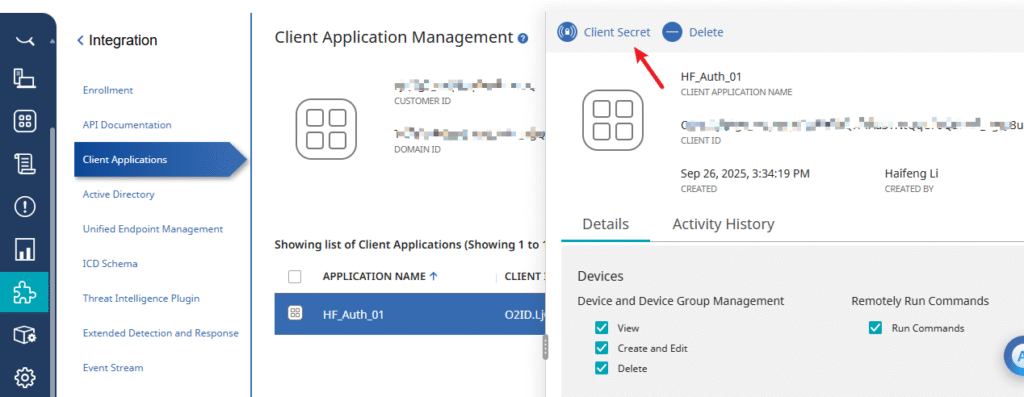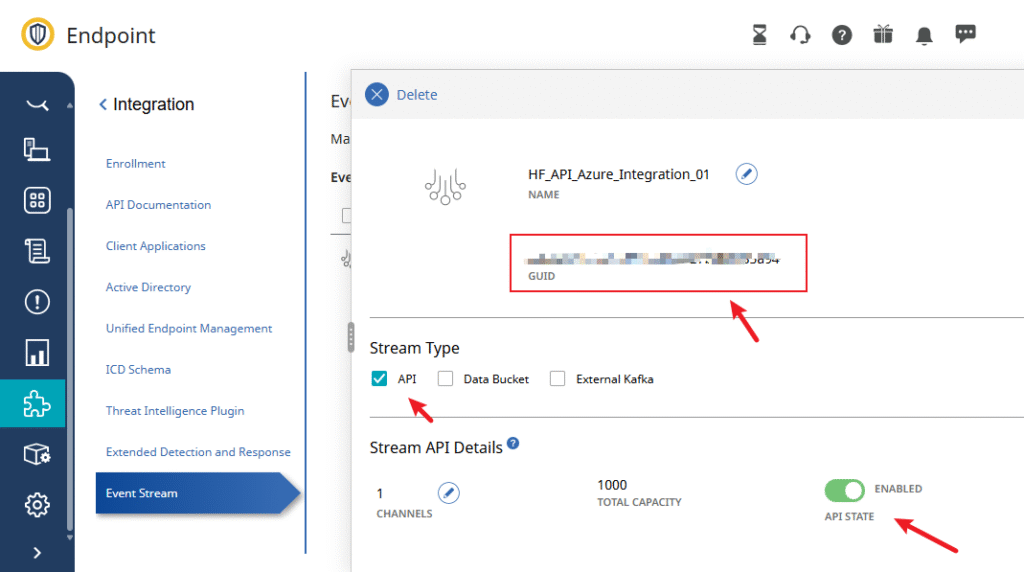Retrieving Event Stream via Symantec Endpoint Security API
Scenario and Goal
We want to retrieve real-time event streams from Symantec Endpoint Security (SES) and output them locally or forward them to a log platform. This article demonstrates how to:
- Create a Client Application in the SES console (to obtain OAuth2 credentials)
- Create an Event Stream in the SES console (to obtain a Stream GUID)
- Use a Python script to connect to the API and print events
- Validate the setup by applying a policy change
1. Create a Client Application
- Log in to the SES console → Integration → Client Applications.
- Click Add, enter a name, and save.
- In the application’s menu, select Client Secret and copy the OAuth Credentials (usually
Basic xxx). - Assign the necessary privileges to the Client Application.


2. Create an Event Stream
- SES console → Integration → Event Streams.
- Create a new stream and select the event types to export.
- Save and obtain the stream’s GUID.

3. Python Example Script
This script will:
- Use the
Basiccredentials to obtain a Bearer token - Open the specified Event Stream
- Continuously print events to standard output
#!/usr/bin/env python3
import requests, json
OAUTH_CRED = "Basic <Your OAuth Credentials>"
STREAM_GUID = "<Your Stream GUID>"
BASE = "https://api.sep.securitycloud.symantec.com"
# Get Token
tok = requests.post(
f"{BASE}/v1/oauth2/tokens",
headers={"accept":"application/json","authorization":OAUTH_CRED,"content-type":"application/x-www-form-urlencoded"},
data={"grant_type":"client_credentials"},
).json()["access_token"]
# Open Event Stream
with requests.post(
f"{BASE}/v1/event-export/stream/{STREAM_GUID}/0",
params={"ConnectionTimeout":"5"},
headers={"Authorization":f"Bearer {tok}","Accept-Encoding":"gzip","Content-Type":"application/json"},
json={}, stream=True
) as r:
r.raise_for_status()
for line in r.iter_lines(decode_unicode=True):
if not line: continue
for ev in json.loads(line).get("events", []):
print(json.dumps(ev, ensure_ascii=False))
4. Validation Test
To confirm that the event stream works, perform an action in the console, such as adding a policy to a Policy Group and applying it:
- Console → Policies → Add a policy to a target group and apply it.
- Return to the running script and wait a few seconds.
- The terminal will print a JSON object similar to the following:

This confirms that the Event Stream and API integration are functioning correctly.
Recent Comments